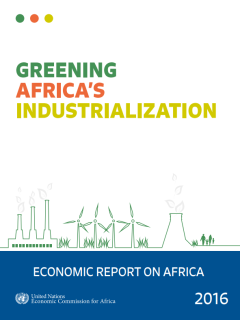
Structural transformation in Africa’s economies remains the highest priority, and industrialization is the top strategy for achieving it in practice. Achieving the African Union’s Agenda 2063 and fulfilling the Sustainable Development Goals will demand a major re-design of growth strategies across the continent. The big opportunity for Africa in 2016, as a latecomer to industrialization, is in adopting alternative economic pathways to industrialization. This requires governments to take on-board the drivers, challenges, and trade-offs in pushing for a greening of industrialization—and to build them into the vision and route-map for action. Seizing the momentum of the Paris Climate Agreement and the SDGs provides the ideal timing for such a shift in economic strategy.
This is why the ECA has seized the opportunity this year to herald the era for Africa to pursue a different pathway to industrialization, in short, one that enables the region to green its industrialization. In so doing Africa will pursue its development agenda along a pathway that ensures that economic growth is truly sustainable and inclusive through green jobs and positive spillovers. It is this new niche that we recognize as a winning formula, a “no regret” option FOREWORD xvii Greening Africa’s Industrialization that will secure Africa a central space in the world economy. Such a transformation will make significant productivity gains in rural areas with vibrant hubs of agri-business and linkages to industrial activity.
Through case studies this report Greening Africa's Industrialization: Economic Report on Africa 2016 shows that there is good news on greening industrialization in Africa. A number of countries have already put in place policies and regulatory frameworks for green industrialization. A good number of enterprises are taking the lead to implement green measures, driven by legal requirements and opportunities for economic returns on their investments, as well as the need for a long-term sustainable business model. But more need to follow suit, and this report is an entry point for shared learning and the replication of good practice on how we develop a low-carbon pathway.
